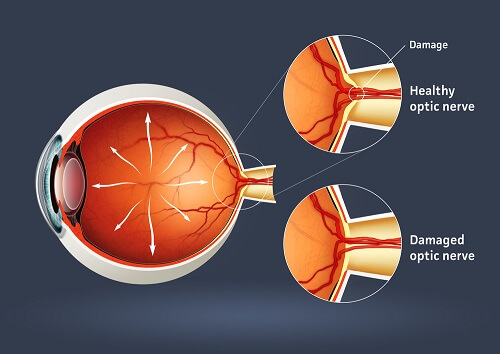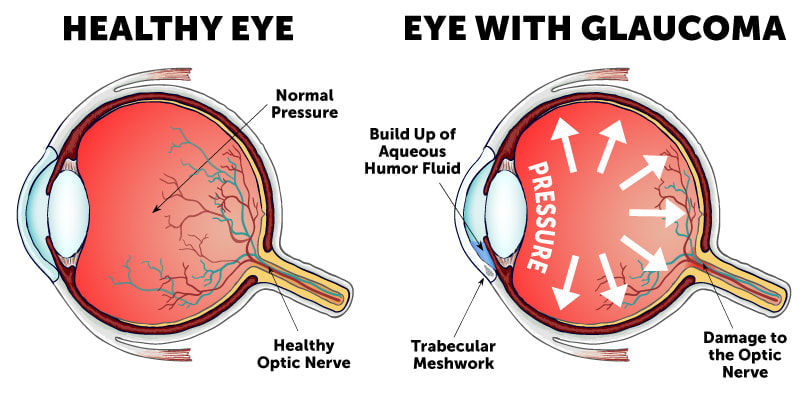Neighborhood Glaucoma Service Near Me: Very Early Detection and Therapy Choices
Wiki Article
Recognizing the Different Vision Adjustment Procedures Available for Clearer View
In the world of vision improvement treatments, a wide range of alternatives exist to resolve refractive errors and supply people with more clear view. From the commonly identified LASIK surgical treatment to less invasive procedures like PRK and implantable lenses, the area of ophthalmology supplies a variety of strategies customized to fit different needs and choices. Each treatment features its own set of factors to consider, advantages, and possible risks. Understanding the subtleties of these vision adjustment methods is important for making notified choices concerning one's visual health. Allow's check out the complexities of these treatments and clarified the path to attaining enhanced vision clearness.LASIK Surgical Procedure
LASIK surgery is a common refractive procedure utilized to fix vision issues such as astigmatism, nearsightedness, and farsightedness. This surgical technique, which stands for Laser-Assisted in Situ Keratomileusis, aims to reshape the cornea to improve how light is concentrated on the retina, inevitably improving vision quality.One of the main benefits of LASIK surgical procedure is the rapid enhancement in vision experienced by individuals. Numerous individuals notice a significant improvement in their sight quickly after the treatment. Additionally, the majority of individuals report marginal discomfort and pain throughout the surgical procedure and recovery duration. The recuperation time for LASIK is relatively quick, with many people going back to their everyday activities within a day or two post-operation. In general, LASIK surgery is a prominent option for people seeking a lasting solution for their vision issues.
PRK Treatment
While also an usual refractive procedure, the PRK (Photorefractive Keratectomy) method differs from LASIK surgery in its strategy to correcting vision problems. In PRK, as opposed to producing a flap on the cornea, the outer layer of the cornea, called the epithelium, is completely gotten rid of. This enables the laser to reshape the cornea to deal with refractive errors such as astigmatism, nearsightedness, and farsightedness straight on the surface.
Regardless of the longer recovery time, PRK can generate exceptional lead to vision renovation, making it a beneficial alternative for those that may not appropriate candidates for LASIK surgery.
Implantable Lenses
In comparison to PRK where the cornea is reshaped directly, implantable lenses use another approach for dealing with vision by inserting man-made lenses inside the eye. This procedure is particularly valuable for individuals with high levels of farsightedness, nearsightedness, or astigmatism that may not be ideal candidates for laser surgeries like LASIK or PRK.
Implantable lenses, additionally referred to as phakic intraocular lenses, work by supplementing the eye's natural lens with an artificial one. refractive surgeries in al. These lenses can be put before the all-natural lens (anterior chamber) or behind the iris and in front of the all-natural lens (posterior chamber) By changing the power and positioning of these lenses, eye doctors can properly fix refractive mistakes and boost visual acuity
One advantage of implantable lenses is that they are exchangeable and removable, supplying adaptability for future adjustments. Nevertheless, just like any kind of surgical procedure, there are risks included, such as infection or cataract development. Clients thinking about implantable lenses need to seek advice from an eye care expert to figure out one of the most appropriate alternative based on their private needs and eye wellness.
Corneal Rings
Corneal rings, additionally referred to as intracorneal ring segments, are little, clear devices inserted right into the cornea to fix vision distortions such as keratoconus. Keratoconus is a problem where the cornea thins and bulges external, triggering vision to become distorted. The insertion of corneal rings aids to flatten the cornea, improving visit here aesthetic skill and decreasing the uneven astigmatism triggered by keratoconus.The procedure for placing corneal rings is minimally intrusive and fairly fast, frequently done as an outpatient procedure. Throughout the surgical treatment, the eye doctor makes a small incision in the cornea and inserts the rings at a details deepness. As soon as in position, the rings aid to improve the cornea, providing a smoother surface area for light to enter the eye, which can cause clearer vision.
Corneal rings are considered a reversible procedure, as they can be removed or replaced if required. eyecare near me. While they may not totally eliminate the requirement for glasses or get in touch with lenses, corneal rings can significantly boost vision high quality and general visual comfort for people with keratoconus or various other corneal irregularities
Refractive Lens Exchange
Following the adjustment of corneal irregularities with procedures like corneal rings, another vision correction technique that can deal with refractive errors is Refractive Lens Exchange (RLE) RLE is a surgical procedure that involves changing the eye's all-natural lens with a man-made intraocular lens (IOL) to correct refractive mistakes such as farsightedness, my company nearsightedness, and presbyopia. This procedure is specifically advantageous for individuals who may not be ideal prospects for procedures like LASIK or PRK due to elements such as thin corneas or high refractive mistakes.
Verdict
To conclude, there are different vision improvement procedures available to help individuals attain clearer sight. LASIK surgical treatment, PRK treatment, implantable lenses, corneal rings, and refractive lens exchange are all choices that can address different vision concerns. It is essential for individuals to speak with their eye care service provider to identify the most appropriate treatment based upon their details demands and choices. With innovations in innovation, achieving boosted vision is now much more available than in the past.In the realm of vision adjustment treatments, a wide range of options exist to attend to refractive errors and give individuals with clearer sight.LASIK surgery is a typical refractive procedure used to fix vision problems such as astigmatism, nearsightedness, and farsightedness.While also a common refractive procedure, the PRK (Photorefractive Keratectomy) strategy varies from LASIK surgery in its strategy to correcting vision problems.Following the correction of corneal irregularities with procedures like corneal rings, an additional vision improvement technique that can attend to refractive errors is Refractive Lens Exchange (RLE) LASIK surgical treatment, PRK procedure, implantable lenses, corneal rings, and refractive lens exchange are all choices her latest blog that can resolve different vision issues.
Report this wiki page